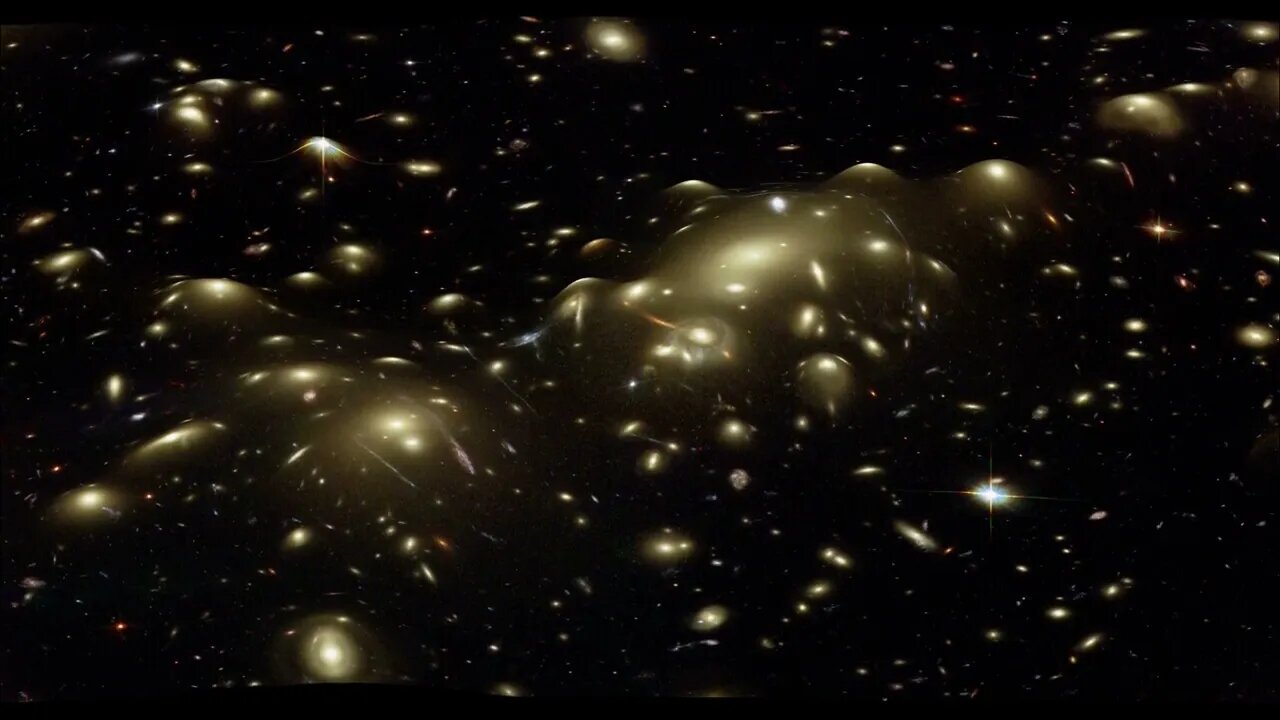Premium Only Content

Exploring the Depths of the Universe with Gravitational Lensing #short #space #new
Gravitational lensing is a phenomenon that occurs when the path of light from a distant object is curved by the gravitational pull of a massive object, such as a galaxy or a cluster of galaxies. This bending of light can cause the distant object to appear distorted or magnified, depending on the geometry of the gravitational lens.
The effect of gravitational lensing can be seen in a variety of astronomical observations, from the images of galaxies and clusters of galaxies to the cosmic microwave background radiation. In some cases, gravitational lensing can even be used to magnify distant objects that are otherwise too faint to be observed directly, allowing astronomers to study the properties of these objects in more detail.
One of the most famous examples of gravitational lensing is the Einstein Cross, which is a quasar that appears as four distinct images due to the gravitational lensing effect of a foreground galaxy. This phenomenon was predicted by Albert Einstein's theory of general relativity, which describes gravity as a curvature of spacetime.
Gravitational lensing has many applications in astronomy and astrophysics. By studying the distortions and magnifications caused by gravitational lenses, astronomers can learn more about the structure and evolution of the universe, as well as the properties of individual objects within it.
One of the most significant applications of gravitational lensing is in the study of dark matter. Dark matter is an invisible form of matter that is thought to make up a large fraction of the total mass in the universe, and its distribution can be inferred from the gravitational lensing effect it produces.
Gravitational lensing also allows astronomers to measure vast distances in the universe. Thanks to powerful instruments such as the Hubble Space Telescope and James Webb Space Telescope, we can view objects that predate the formation of our solar system. Gravitational lensing allows us to observe even further back in time during the formation of our early universe.
The picture shows Abell 2218, a rich galaxy cluster composed of thousands of individual galaxies. It sits about 2.1 billion light-years from the Earth (redshift 0.17) in the northern constellation of Draco. When used by astronomers as a powerful gravitational lens to magnify distant galaxies, the cluster allows them to peer far into the Universe. However, it not only magnifies the images of hidden galaxies, but also distorts them into long, thin arcs.
Several arcs in the image can be studied in detail thanks to Hubble's sharp vision. Multiple distorted images of the same galaxies can be identified by comparing the shape of the galaxies and their color. In addition to the giant arcs, many smaller arclets have been identified.
By using the gravitational magnification from six massive lensing galaxy clusters, the NASA/ESA Hubble Space Telescope has provided scientists with the largest sample of very distant galaxies seen to date. Some of the newly found magnified objects are dimmer than the faintest ones seen in the legendary Hubble Ultra Deep Field, which is usually considered the deepest image of the Universe.
By combining both visible and near-infrared observations from Hubble's Advanced Camera for Surveys (ACS) and Near Infrared Camera and Multi-Object Spectrometer (NICMOS), scientists searched for galaxies that are only visible in near-infrared light. They uncovered 10 candidates believed to lie about 13 billion light-years away (a redshift of approximately 7.5), which means that the light gathered was emitted by the stars when the Universe was still very young - a mere 700 million years old.
Styx AI, which is developing innovative techniques based on quantum mechanics, depth maps, generative imaging, machine learning, and new mathematics to move the lens of complex nonuniform spacetime. Its process can break down an image into nearly infinite pieces, providing greater depth and detail to reveal previously unseen information.
Gravitational lensing not only provides insight into the properties of distant objects but also into the distribution of dark matter in the universe. Dark matter is an invisible form of matter that is thought to make up a large fraction of the total mass in the universe, and its distribution can be inferred from the gravitational lensing effect it produces. "This stuff is cool."
Credit: NASA, ESA, and Johan Richard (Caltech, USA)
Acknowledgement: Davide de Martin & James Long (ESA/Hubble)
Processed by STYX AI
@NASA @NASAGoddard @NASAJPL @NASAgovVideo @NASAgovVideo @hubblespacetelescope @NASAWebbTelescope @EuropeanSpaceAgency @YouTube
#gravity #darkmatter #Abell2218 #HubbleSpaceTelescope
#JamesWebbSpaceTelescope #cosmicmicrowaveradiation
#earlyuniverse #EinsteinCross #galaxyclusters
#quantummechanics
-
 2:06:49
2:06:49
vivafrei
16 hours agoEp. 289: Arctic Frost, Boasberg Impeachment, SNAP Funding, Trump - China, Tylenol Sued & MORE!
220K128 -
 2:56:28
2:56:28
IsaiahLCarter
11 hours ago $4.42 earnedThe Tri-State Commission, Election Weekend Edition || APOSTATE RADIO 033 (Guest: Adam B. Coleman)
21.2K4 -
 15:03
15:03
Demons Row
6 hours ago $6.13 earnedThings Real 1%ers Never Do! 💀🏍️
30K12 -
 35:27
35:27
megimu32
9 hours agoMEGI + PEPPY LIVE FROM DREAMHACK!
154K12 -
 1:03:23
1:03:23
Tactical Advisor
13 hours agoNew Gun Unboxing | Vault Room Live Stream 044
229K37 -
 19:12
19:12
Robbi On The Record
14 hours ago $19.01 earnedThe Loneliness Epidemic: AN INVESTIGATION
66.5K94 -
 14:45
14:45
Mrgunsngear
1 day ago $113.27 earnedFletcher Rifle Works Texas Flood 30 Caliber 3D Printed Titanium Suppressor Test & Review
114K29 -
 17:17
17:17
Lady Decade
1 day ago $8.17 earnedMortal Kombat Legacy Kollection is Causing Outrage
75.3K14 -
 35:51
35:51
Athlete & Artist Show
1 day ago $14.15 earnedIs Ryan Smith The Best Owner In The NHL?
89.7K11 -
 22:56
22:56
American Thought Leaders
2 days agoCharles Murray: I Thought Religion Was Irrelevant to Me. I Was Wrong.
73.9K39